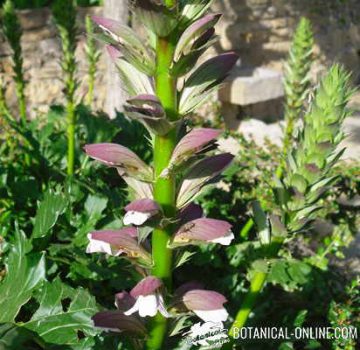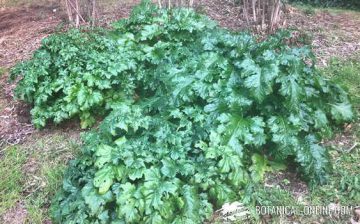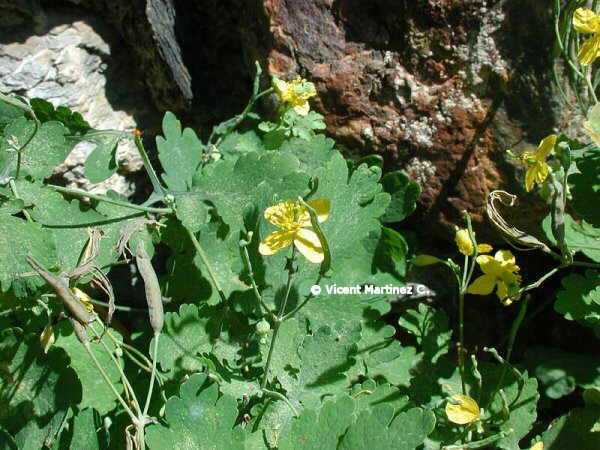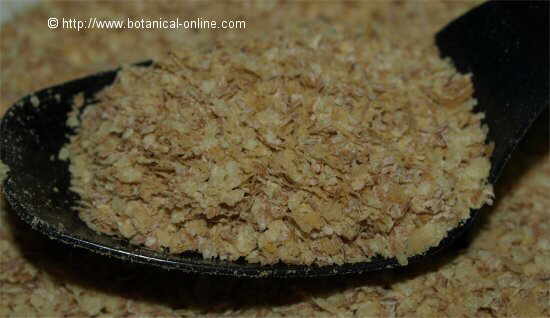Contents
- 1 How to grow acanthus, Acanthus mollis L.
- 1.1 How to grow and care for acanthus
- 1.2 Where does acanthus grow?
- 1.3 Acanthus habitat and distribution
- 1.4 Acanthus description
- 1.5 When does acanthus bloom and what are its flowers like?
- 1.6 Does the plant die in winter?
- 1.7 Acanthus environment and exhibition
- 1.8 Acanthus irrigation
- 1.9 Acanthus environment and exhibition
- 1.10 Types of soil to grow acanthus
- 1.11 Where is it better to plant acanthus?
- 1.12 Acanthus propagation
How to grow acanthus, Acanthus mollis L.
How to grow and care for acanthus

Acanthus (Acanthus mollis L.) is a spectacular ornamental plant that never goes unnoticed and is widely used in gardening. It stands out for its large size, its flower, showy and original, its robust appearance, its elegant appearance and the voluminous set of its leaves.
Below is an entire acanthus cultivation guide: care, irrigation, land preparation, fertilization, how to multiply the plant and possible diseases and pests.
Where does acanthus grow?
Acanthus is a plant that is widely spread in the gardens of the Mediterranean areas. It is not an autochthonous plant, but has been naturalized since ancient times and basically for ornamental use.
It appears spontaneously in areas near towns and old houses, rural trails, farm fields, ruins, rubbish heap, castles, … and any other terrain near inhabited places that is minimally humid, cool and shady.
Acanthus habitat and distribution
As a wild plant, we find acanthus basically in areas close to the coast, where the climate allows its rapid reproduction and expansion and has also allowed it to escape from gardens and parks, being able to colonize large sectors of the mountains and valleys close to large cities and other human habitats.
Acanthus description
It is an annual herbaceous plant that can reach up to 70-100 centimeters in height. It has huge leaves that cover all the physical space around it. A single plant can occupy an area with a diameter of 1.5 m. or more, on well-fertilized soils. Acanthus leaves are extremely trimmed, shiny and smooth, dark green, sometimes blackish, full of a mucilaginous juice.
The flowers are hermaphroditic and grow arranged on top of each other but all separated and attached to the flower stalk, without a peduncle to support them, but emerge from the armpit of a spiny floral leaf on the edge. The fruits are capsules that contain between 2 and 4 black seeds.
When does acanthus bloom and what are its flowers like?
In late spring and early summer, especially the months of June and August, acanthus begins its flowering, which can continue until autumn in very mild climates. For this, the plant continues to maintain the splendor of its leaves, born between late winter and spring. In very hot summers, if the plant is kept in full sun, the leaves may wilt.
The flowers are very characteristic, pink or white, arranged in flower stems that look like elegant rods and that give it a majestic appearance.
Does the plant die in winter?
In winter, the plant loses practically all its leaves and only the dried flower spike remains. The root of the plant will remain active under the ground throughout the winter, waiting for the end of the cold to be reborn. At the end of winter, in January-February, the plant throws its leaves to bloom in spring.
Acanthus environment and exhibition
If we plant it in the garden, the ideal place is to place it in a semi-shady or sunny place.
Easy adaptation to the Mediterranean climate and resistant to benign cold, although young plants will probably need to be protected from the cold for the first few years.
Once established, the plants are resistant to drought.
Acanthus irrigation
In the vegetative season – spring and summer – we should not let the soil dry out completely. In winter, one watering every 15 days will be enough.
In Mediterranean climates, if it is grown outdoors and directly on the ground, except if it is a very dry year, it has enough with the rainwater during the spring, in summer it is recommended to reinforce the irrigation.
Acanthus environment and exhibition
If we plant it in the garden, the ideal site is to place it in a semi-shady or sunny place.
Easy adaptation to the Mediterranean climate and resistant to benign cold, although young plants will probably need to be protected from the cold for the first few years.
Once established, the plants are resistant to drought.
Types of soil to grow acanthus
- The root is very persistent and therefore requires deep and well-drained soils.
- It prefers sandy and clay soils. Neutral or slightly alkaline soils are more favorable.
Where is it better to plant acanthus?

Acanthus is usually a spectacular plant that is planted outdoors, next to the walls to decorate them, or somewhere in the garden where it offers enough space. Acanthus is a large foliage plant that can cover a large amount of ground.
It must be borne in mind that it can become an invasive plant, that when conditions are favorable, it reproduces rapidly both by seeds and by its persistent roots.
Acanthus propagation
The plant reproduces by the seeds, which are put to germinate in a seedbed when they are mature. Germination usually occurs after 3-4 weeks at temperatures close to 10ºC. Then they are transplanted into individual pots and in two seasons, they can be planted to the final ground, at the end of spring.
Another possibility is to reproduce the plant by division of clumps. It consists of transplanting a piece of bush, from an adult plant (2 years or more), from its root. To do this, in spring or autumn, we proceed to dig up the plant and divide it from the roots, carefully. It can be replanted directly in the ground or in a pot.
![]() More information on acanthus
More information on acanthus








